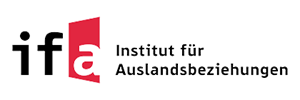
WCW-nine
Swipe down
V

Charlotte Arnhold, Oliver Bulas, Vivian Caccuri, Loretta Fahrenholz, Jeanne Faust, Julia Horstmann, Daniela Mattos, Michaela Melian, Marianna Meneguetti, artist group OPAVIVARÁ!i, artist group Jochen Schmith, Caroline Valansi, Aleta Valente, Andrea Winkler

An exhibition which took place during one week in a hotel room at the Ipanema Inn in Rio de Janeiro.
Opening: March 17th, 17h
Exhibition: March 18th - 22nd 2018, 10h - 19h
In the case of hotel rooms the question of hospitality is moving into the spotlight, which is at the same time also the theme of the exhibition. Additionally, the approach of hotel room exhibitions puts emphasis on the process through its ephemeral form. We are interested in the idea of 'exhibition as assertion', as well as the question of ubiquitous mobility. At the same time a hotel room is a very impersonal location, which enables us
Opening: March 17th, 17h
Exhibition: March 18th - 22nd 2018, 10h - 19h
In the case of hotel rooms the question of hospitality is moving into the spotlight, which is at the same time also the theme of the exhibition. Additionally, the approach of hotel room exhibitions puts emphasis on the process through its ephemeral form. We are interested in the idea of 'exhibition as assertion', as well as the question of ubiquitous mobility. At the same time a hotel room is a very impersonal location, which enables us
to organize exhibitions as interventions with a relatively small budget also at distant locations.
In the exhibition of "WCW-nine" we would like to present an extract of German context and to confront it at the same time with an equal number of Brazilian artists. Among other things, the resulting group exhibition is an attempt to learn more about the differences and mutualities of both spheres - as a snapshot of contemporary art production.
We invited the participating artists to look into the situational conditions at the spot. One aspect is the precarious and transient form of presentation in a hotel room and the theme of hospitality (or what it means to be guest / host) that it implies.
In the exhibition of "WCW-nine" we would like to present an extract of German context and to confront it at the same time with an equal number of Brazilian artists. Among other things, the resulting group exhibition is an attempt to learn more about the differences and mutualities of both spheres - as a snapshot of contemporary art production.
We invited the participating artists to look into the situational conditions at the spot. One aspect is the precarious and transient form of presentation in a hotel room and the theme of hospitality (or what it means to be guest / host) that it implies.

Jacques Derrida wrote that a situation of hospitality comes into being when the guest acts to some extend as the host for the one who welcomed him.
On the other hand the thought somewhat suggests itself for the invited artists to take into consideration the specific social, historical and cultural conditions of Rio in the course of their work.
As a result of a conflict inside the former "WCW-Gallery" we were forced to move to the "underground" and since then we call ourselves "WCW-nine". WCW-nine became homeless and started moving around aimlessly and now presents itself here and there (for example in hotel rooms).
As a result of a conflict inside the former "WCW-Gallery" we were forced to move to the "underground" and since then we call ourselves "WCW-nine". WCW-nine became homeless and started moving around aimlessly and now presents itself here and there (for example in hotel rooms).
We conceived the WCW-nine exhibition in a critical distance from the WCW-Gallery's past exhibitions. They are a result of our critical reflection on the fact that the past exhibition program was male-dominated, very European, white and exclusive because of the prerequisites of the white-cube presentation format.
Nevertheless, the exhibition series should also draw from the network of the former WCW-Gallery and exhibit its positive elements.
This way we also hope to stimulate exchange between Brazilian and German artists and to animate discussion.
Nevertheless, the exhibition series should also draw from the network of the former WCW-Gallery and exhibit its positive elements.
This way we also hope to stimulate exchange between Brazilian and German artists and to animate discussion.

Daniela Mattos
Oferenda (La Libertad), 2017-2018
Oferenda (La Libertad), 2017-2018
More information here

Jeanne Faust
Richard, I owe you one
Richard, I owe you one
More information here

Caroline Valansi
Revulvações!, 2018
Revulvações!, 2018
More information here

Loretta Fahrenholz
Ditch Plains, 2013
Ditch Plains, 2013
More information here

Vivian Caccuri
Dissimulado, 2009
Dissimulado, 2009
More information here

Andrea Winkler
BAGS (Global Traveler), 2018
BAGS (Global Traveler), 2018
More information here

Charlotte Arnhold
Making History Series - Pt 1, 2018
Making History Series - Pt 1, 2018
More information here

Julia Horstmann
Untitled (Eichkamp/Oderberger Strasse10 /#5), 2017
Untitled (Eichkamp/Oderberger Strasse10 /#5), 2017
More information here

Charlotte Arnhold
Lonely Blue Girl feat. Shaun Kieran McMillan, 2017
Lonely Blue Girl feat. Shaun Kieran McMillan, 2017
More information here

Opavivará!
Cangaço, 2018
Cangaço, 2018
More information here

Michaela Melián
Lunapark, 2012
Lunapark, 2012
More information here

Jochen Schmith
untitled (Cashmere), 2017
untitled (Cashmere), 2017
More information here

Opavivará!
Cangaço, 2018
Cangaço, 2018
More information here

Julia Horstmann
Untitled (Eichkamp/Oderberger Strasse10 /#6), 2017
Untitled (Eichkamp/Oderberger Strasse10 /#6), 2017
More information here

Charlotte Arnhold
(b. 1984 in Hamburg, German), lives and works in Glasgow, UK. Arnhold works with performance, sculpture, video and music.
Solo/two-person shows include: Papageien und die sinnlose Vorstellung, exhibition with Arron Sands, HfbK Gallery, Hamburg, Germany (2015); Ouvre La Porte, exhibition with Silvia Berger, Gallery Hinterconti, Hamburg, Germany (2011).
Group shows include: Dreams & Perfume, a collaboration with Beth Shapeero and Estelle Fournier, Glasgow Open House Festival 2017, Glasgow, UK (2017); Hiscox Art Prize nominee exhibition, Kunsthaus Hamburg, Germany (2015);
(b. 1984 in Hamburg, German), lives and works in Glasgow, UK. Arnhold works with performance, sculpture, video and music.
Solo/two-person shows include: Papageien und die sinnlose Vorstellung, exhibition with Arron Sands, HfbK Gallery, Hamburg, Germany (2015); Ouvre La Porte, exhibition with Silvia Berger, Gallery Hinterconti, Hamburg, Germany (2011).
Group shows include: Dreams & Perfume, a collaboration with Beth Shapeero and Estelle Fournier, Glasgow Open House Festival 2017, Glasgow, UK (2017); Hiscox Art Prize nominee exhibition, Kunsthaus Hamburg, Germany (2015);
Journeys are made by the people you travel with, University of Goldsmiths, London, UK (2014); A Line – Working, Weaving, Exhibition with Yael Davids and HfbK students, Kunstverein Harburger Bahnhof, Hamburg, Germany (2013).

Oliver Bulas
(b. 1981 in Hamburg, GER), lives and works in Berlin.
Oliver Bulas invites visitors to dive into "constructed situations" (scenes), which he creates. For that matter he is interested in how social space is constituted. How can one produce this space in times, in which capitalism and its division of labour result in endless division of space, simultaneously making everything interchangeable? His exhibitions are propositions, in certain circumstances also deceptions. He is not conceiving them as rigid constructions, instead they are emerging in the presence of the audience.
(b. 1981 in Hamburg, GER), lives and works in Berlin.
Oliver Bulas invites visitors to dive into "constructed situations" (scenes), which he creates. For that matter he is interested in how social space is constituted. How can one produce this space in times, in which capitalism and its division of labour result in endless division of space, simultaneously making everything interchangeable? His exhibitions are propositions, in certain circumstances also deceptions. He is not conceiving them as rigid constructions, instead they are emerging in the presence of the audience.
Oliver Bulas studied at the Hochschule für bildende Künste in Hamburg (2005-2012) and at SFAI in San Francisco. He was a postgraduate researcher at Jan Van Eyck Academie, Maastricht, NL.
Solo exhibitions (selection): M.1 Arthur Boskamp Stiftung Hohenlockstedt, GER (2013); [MAKNETE] (Galerie für Landschaftskunst), Hamburg, GER (2012); Hamburger Kunstverein, Hamburg, GER (2008).
Group exhibitions (selection): Kunsthaus Hamburg, Hamburg, GER (2013); basis Frankfurt e.V., Frankfurt, GER (2013); Swell Gallery, San Francisco, US (2011); Yvon Lambert Gallery, New York, US (2007); Musée d'Art Moderne, Paris, FR (2003).

Loretta Fahrenholz
Lives and works in Berlin.
EDUCATION
2011 Whitney Independent Study Program, New York, USA
2010 Postgraduate Studies, Academy of Visual Arts, Leipzig, Germany
2007 Academy of Fine Arts, Vienna, Austria
2005 Academy of Visual Arts, Leipzig, Germany
SOLO EXHIBITIONS
2015 Kuntzhalle, Zurich, Zurich, Switzerland
Midway Contemporary Art, Minneapolis, MN
The Dross of It All & The Loss of It All, Galerie Daniel Buchholz, Cologne, Germany
2014 Implosion, Galerie Francesca Pia, Zurich, Switzerland
Lives and works in Berlin.
EDUCATION
2011 Whitney Independent Study Program, New York, USA
2010 Postgraduate Studies, Academy of Visual Arts, Leipzig, Germany
2007 Academy of Fine Arts, Vienna, Austria
2005 Academy of Visual Arts, Leipzig, Germany
SOLO EXHIBITIONS
2015 Kuntzhalle, Zurich, Zurich, Switzerland
Midway Contemporary Art, Minneapolis, MN
The Dross of It All & The Loss of It All, Galerie Daniel Buchholz, Cologne, Germany
2014 Implosion, Galerie Francesca Pia, Zurich, Switzerland
Ditch Plains – A film by Loretta Fahrenholz, The Gardens, Vilnius, Lithuania
2013 My Throat – My Air, Ludlow 38, New York, NY
Ditch Plains, Reena Spaulings Fine Art, New York, NY
Ditch Plains, Project Native Informant, London, UK Halle fur Huntz, Luneburg, Germany
2011 Europa, Sotoso, Brussels, Belgium
EXHIBITIONS AND SCREENINGS
2015 Welcome to the Jungle – Kunst-Werke Berlin, KW Institute for Contemporary Art, Berlin, Germany
America is Hard to See, Whitney Museum of American Art, New York City, NY

Jeanne Faust
(b. 25. November 1968 in Wiesbaden, Germany)
Faust studied from 1993 to 1998 at the University of Fine Arts in Hamburg with a focus on photography, film and video. In 1999 she was awarded the Hamburger Arbeitsstipendium for Fine Arts and in 2004 the scholarship of the Lichtwark Prize of the Free and Hanseatic City of Hamburg. In 2007 she was nominated for the National Gallery Prize for Young Art in Berlin. In 2012 she was a scholarship holder of the German Academy Rome Villa Massimo.
In November 2006 she started a professorship for intermedial Photography at the University of the Arts Bremen.
(b. 25. November 1968 in Wiesbaden, Germany)
Faust studied from 1993 to 1998 at the University of Fine Arts in Hamburg with a focus on photography, film and video. In 1999 she was awarded the Hamburger Arbeitsstipendium for Fine Arts and in 2004 the scholarship of the Lichtwark Prize of the Free and Hanseatic City of Hamburg. In 2007 she was nominated for the National Gallery Prize for Young Art in Berlin. In 2012 she was a scholarship holder of the German Academy Rome Villa Massimo.
In November 2006 she started a professorship for intermedial Photography at the University of the Arts Bremen.
Since 2009 she has been professor for mixed media specialization in time-related mediadepartment at the University of Fine Arts Hamburg.

Julia Horstmann
(b. born 1974 in Hamburg, Germany)
Lives and works in Berlin.
SOLO EXHIBITIONS
2016 "Erase/Rewind 2′′, mit/with Tina Roeder, Berlin.
"Allegro School Frieze. Julia Horstmann / Tina Roeder", (part of exhibition "Something From Nothing", KAOS, Berlin), Allegro Grundschule Berlin.
2015
"Through", Studio, Berlin.
2012
"Wallwork # 6′′, L40, Verein zur Förderung von Kunst und Kultur am Rosa-Luxemburg-Platz e.V., Berlin.
"ERASE/REWIND", Galerie Christian Nagel, Berlin.
(b. born 1974 in Hamburg, Germany)
Lives and works in Berlin.
SOLO EXHIBITIONS
2016 "Erase/Rewind 2′′, mit/with Tina Roeder, Berlin.
"Allegro School Frieze. Julia Horstmann / Tina Roeder", (part of exhibition "Something From Nothing", KAOS, Berlin), Allegro Grundschule Berlin.
2015
"Through", Studio, Berlin.
2012
"Wallwork # 6′′, L40, Verein zur Förderung von Kunst und Kultur am Rosa-Luxemburg-Platz e.V., Berlin.
"ERASE/REWIND", Galerie Christian Nagel, Berlin.
GROUP EXHIBITIONS
2017
"Salon – HLOS" (Projektseite: www.hiddenlinesofspace.org), Verein zur Förderung von Kunst und Kultur am Rosa-Luxemburg-Platz, Berlin.
2016
"structural movement", Feuerwache, Berlin.
"One Percent of Art", State of Design 2016, Berlin.
2014
"Räume mit der Schere gezeichnet", Kulturstiftung Schloss Agathenburg, Agathenburg.
2013
"Nur hier. Sammlung zeitgenössischer Kunst der Bundesrepublik Deutschland. Ankäufe von 2007 bis 2011′′, Bundeskunsthalle, Bonn.

Daniela Mattos
is a visual artist, educator and independent curator. She develops her practice in the contemporary art field since the 2000's and works mostly with performance, photography, videoart and text-based art. She holds a Post-PHD degree in Visual Arts.
Some of her solo shows are: A room of my own (MAC-Museu de Arte Contemporânea de Niterói, 2014/2015) and Make Over (Museu de Arte Moderna Aluisio de Magalhães, Recife, 2007).
Selected collective exhibitions are: Das virgens em cardumes e da cor das auras (Museu Bispo do Rosário, Rio de Janeiro, 2016),7ª Bienal do Mercosul (Radiovisual, Porto Alegre, 2009), Video links Brazil: an anthology of Brazilian video art (Tate Modern, Londres, 2007).
is a visual artist, educator and independent curator. She develops her practice in the contemporary art field since the 2000's and works mostly with performance, photography, videoart and text-based art. She holds a Post-PHD degree in Visual Arts.
Some of her solo shows are: A room of my own (MAC-Museu de Arte Contemporânea de Niterói, 2014/2015) and Make Over (Museu de Arte Moderna Aluisio de Magalhães, Recife, 2007).
Selected collective exhibitions are: Das virgens em cardumes e da cor das auras (Museu Bispo do Rosário, Rio de Janeiro, 2016),7ª Bienal do Mercosul (Radiovisual, Porto Alegre, 2009), Video links Brazil: an anthology of Brazilian video art (Tate Modern, Londres, 2007).
As a independent curator her selected projects are: Partir de Paula Parisot (EAV-Parque Lage, Rio de Janeiro, 2014) A Performance da Curadoria (Paço das Artes, São Paulo, 2011), Performati(vídeo)dade (Festival de Performance Arte Brasil – MAM-RJ, 2011 / CineLage – EAV-Parque Lage, Rio de Janeiro, 2009). As an educator she has been teaching at art schools and the university, such as: Colégio de Aplicação da Universidade Estadual do Rio de Janeiro (2014/2015), Escola de Artes Visuais do Parque Lage (between 2006 and 2011), SESC-Rio de Janeiro and São Paulo (2008-2009). As a resident artist, she elaborated collective performances and workshops on École d'art d'Avignon (França, 2005), University of Chicago – Art Department (EUA, 2013) and CAIXA Cultural – Rio de Janeiro (2017).

Suported by




Capacete

